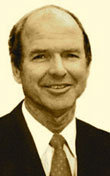 As with any tool, the Elliott Wave Principle is not the answer to most analysts' problems. It is only a tool, but used properly with other analytical aids, it can greatly enhance the understanding of the overall direction of a market.
As with any tool, the Elliott Wave Principle is not the answer to most analysts' problems. It is only a tool, but used properly with other analytical aids, it can greatly enhance the understanding of the overall direction of a market.
The following discussion will be very basic. The primary goal is to give you an understanding of the basic structure or skeleton of a market.
With all due respect to Robert Prechter, I have seen very few other analysts survive almost solely on the Elliott Wave theory. However, having a working knowledge of the principle can prove invaluable when analyzing markets. While I do not purport to be an Elliott Wave expert, I have had success applying many of the basic elements of the principle. In fact, I like to think of myself as an Elliott Wave realist instead of a theorist.
I like to compare the Elliott Wave theory to an outline one might use to present a speech; it provides a general format to follow without having the text etched in stone. The primary pattern for a market consists of a 5-wave rally, as illustrated, followed by a 3- wave downmove, commonly referred to as an a-b-c correction. The 5-wave pattern is referred to as an impulse wave which means a wave in the direction of the prevailing trend.
The primary 5-wave structure may be subdivided into smaller 5-wave patterns, creating smaller impulse waves followed by a-b- c corrections. Note after these waves combine to create a 5-wave move, a larger a-b-c correction forms. The a-wave is shown in this example as a 5-count pattern, indicating this is the direction of the near-term trend and only the first part of a larger degree corrective move. Be aware that an a-wave may or may not be a 5- count wave but that a c-wave invariably will contain 5 swings.
Also take note that the a-b-c corrections ideally return to the area of the previous fourth wave. This may be followed by a new impusle wave or by a congestion or sideways pattern.
For an in-depth discussion of the Elliott Wave theory, I suggest you get the book Elliott Wave Principle, by Frost and Prechter. This book should be part of any serious technician's library.
<h2>Basic wave extension</h2>
As with any theory, reality proves variations of the ideal pattern will occur. The primary variation of an impulse is an extension.
An extended wave generally is an elongated or protracted wave within the 5-count basic wave. Extra swings develop which commonly appear to be individual primary waves but actually form a single impulse wave. The wave extensions are generally larger than the minor degree swings within a primary wave but often are not as large or clearly denned as the primary waves.
At times, the extended waves are difficult to distinguish from the primary waves, giving the appearance of a 9-wave structure. The extension is undefined, which is not critical since a 9-wave structure is an extended 5-wave pattern and holds the same level of importance. When dealing with an undefined extension, I have found the subsequent a-b-c correction often terminates in the area of wave 6 (see arrow) instead of the normal area of wave 4.
While the extra swings or extensions may occur within the first or fifth wave, the most common location is within a third wave. Extensions are common, especially in bull markets; generally an extension should be expected to occur in one of the three primary impulse waves. However, extensions normally occur in only one primary wave.
Once an extension has occurred, you can expect the subsequent wave(s) to be easy to identify 5-wave patterns. If the first two impulse waves form without exhibiting an extension, the final wave can be expected to contain an extension; if the first two impulse waves are of similar length as well, the last has the potential to be explosive. Explosive fifth waves may contain extensions within extensions.
For an in-depth discus sion of extended waves, lmpulae read Chapter 1 of Elliott Wave Principle by Frost and Prechter.



 Peter Steidlmayer’s lifelong interest in the markets began during his undergraduate days at the University of California at Berkeley, from which he graduated in 1960. He joined the Chicago Board of Trade in 1963 and has been an independent trader ever since. Peter served on the board of directors of the CBOT from 1981 to 1983. While a director, he was responsible for initiating his own revolutionary concepts in data arrangement and trading information—Market Profile and the Liquidity Data Bank©. He is author of four books: Markets and Market Logic, Steidlmayer on Markets, New Market Discoveries, and 141 West Jackson, A Journey Through Trading Discoveries. He is presently working on his fifth book, The Essence of Trading. Each of these books establishes a rational working framework for organizing the underlying structure and movement of the market(s).
Peter Steidlmayer’s lifelong interest in the markets began during his undergraduate days at the University of California at Berkeley, from which he graduated in 1960. He joined the Chicago Board of Trade in 1963 and has been an independent trader ever since. Peter served on the board of directors of the CBOT from 1981 to 1983. While a director, he was responsible for initiating his own revolutionary concepts in data arrangement and trading information—Market Profile and the Liquidity Data Bank©. He is author of four books: Markets and Market Logic, Steidlmayer on Markets, New Market Discoveries, and 141 West Jackson, A Journey Through Trading Discoveries. He is presently working on his fifth book, The Essence of Trading. Each of these books establishes a rational working framework for organizing the underlying structure and movement of the market(s).